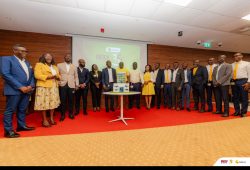From 2025 onwards, Ghana will be a focus country in the Netherlands’ international cultural policy.
This new focus reflects a growing interest in deepening cultural cooperation and exchange between the two nations, building on long-standing historical ties and a shared enthusiasm for creativity and innovation.
Ghana boasts a vibrant cultural scene and holds deep historical ties with the Netherlands. In more recent times, Ghana continues to receive significant interest from the Dutch cultural sector (including the diaspora) to cooperate with Ghanaian partners.
To fuel this momentum, the Embassy of the Kingdom of the Netherlands (EKN) in Ghana is launching a four-year cultural diplomacy program (2025–2028). The initiative aims to deepen the dynamic cultural bond between the two countries, reflecting on our shared history, celebrating distinct identities, and creating space for future collaborations.

The program will focus on three key areas:
- International Heritage Cooperation – exploring and preserving our shared past in an open and inclusive way.
- Creative Industries – supporting innovation in design, fashion, media, and more.
- Visual Arts – promoting dialogue and exchange through exhibitions, residencies, and partnerships.
The Dutch government’s international cultural policy is not just about showcasing Dutch creativity abroad, it’s about fostering meaningful, long-term relationships.
A great example of such a mutually beneficial collaboration is the CBKAir exchange program, in partnership with the Department of Painting and Sculpture at Kwame Nkrumah University of Science and Technology (KNUST), and supported by the Embassy of the Netherlands in Ghana.
In July 2024, KNUST and CBK Zuidoost hosted Dutch artist Razia Barsatie for a residency in Ghana. In return, Ghanaian artist Halimatu Iddrissu traveled to Amsterdam for a residency in October 2024.
Both artists found inspiration in their new environments, gaining fresh perspectives, expanding their networks, and developing their artistic practices through cultural dialogue. The program stands as a strong example of how international exchange can lead to creative growth, mutual understanding, and lasting connections.










